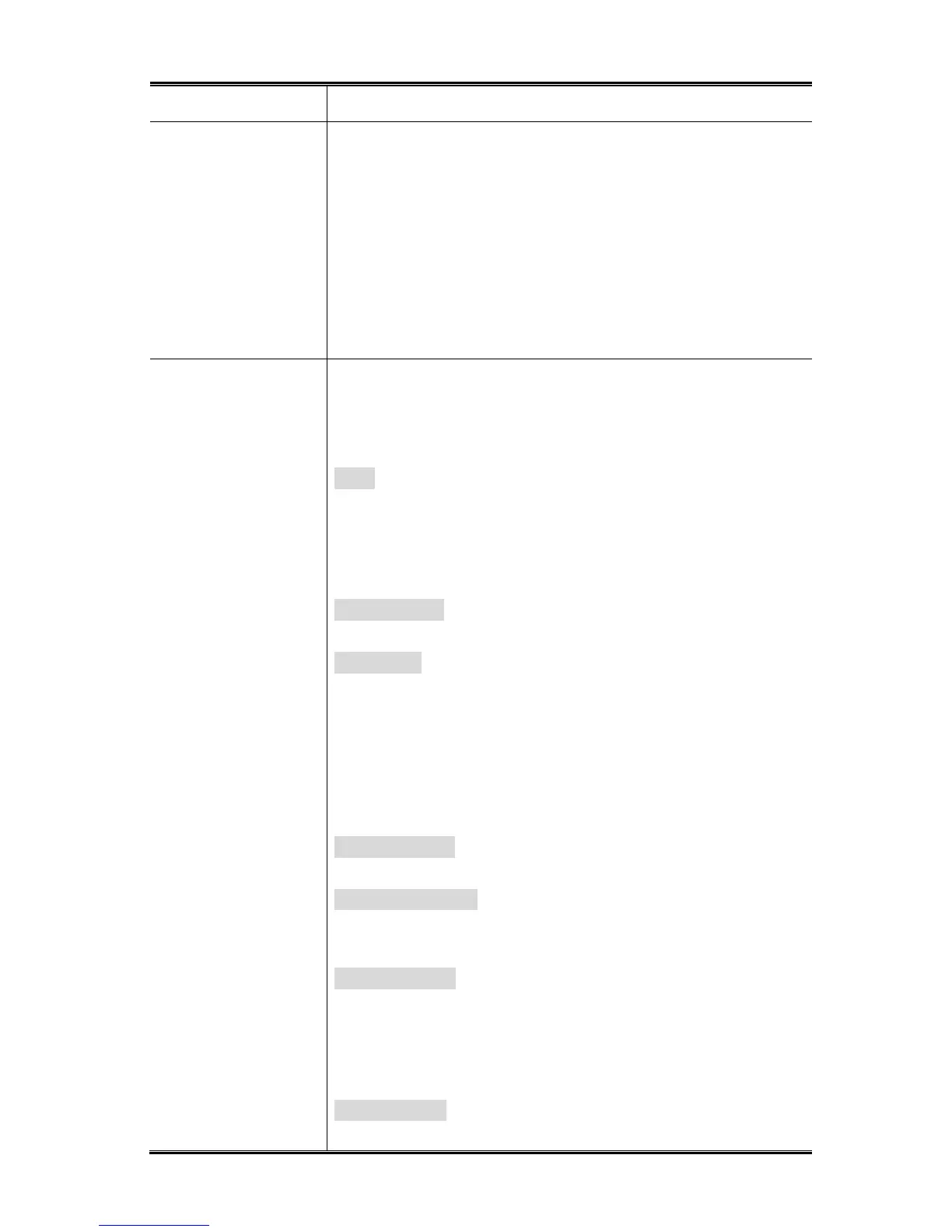L2 switch support, inventory management
• LLDP-MED
Capabilities
LLDP-MED Capabilities describes the neighbor unit's LLDP-MED
capabilities. The possible capabilities are:
1. LLDP-MED capabilities
2. Network Policy
3. Location Identification
4. Extended Power via MDI - PSE
5. Extended Power via MDI - PD
6. Inventory
7. Reserved
• Application Type
Application Type indicating the primary function of the
application(s) defined for this network policy, advertised by an
Endpoint or Network Connectivity Device. The possible
application types are shown below.
Voice - for use by dedicated IP Telephony handsets and other
similar appliances supporting interactive voice services. These
devices are typically deployed on a separate VLAN for ease of
deployment and enhanced security by isolation from data
applications.
Voice Signaling - for use in network topologies that require a
different policy for the voice signaling than for the voice media.
Guest Voice - to support a separate limited feature-set voice
service for guest users and visitors with their own IP Telephony
handsets and other similar appliances supporting interactive
voice services.
Guest Voice Signaling - for use in network topologies that require
a different policy for the guest voice signaling than for the guest
voice media.
Softphone Voice - for use by softphone applications on typical
data centric devices, such as PCs or laptops.
Video Conferencing - for use by dedicated Video Conferencing
equipment and other similar appliances supporting real-time
interactive video/audio services.
Streaming Video - for use by broadcast or multicast based video
content distribution and other similar applications supporting
streaming video services that require specific network policy
treatment. Video applications relying on TCP with buffering
would not be an intended use of this application type.
Video Signaling - for use in network topologies that require a
separate policy for the video signaling than for the video media.

